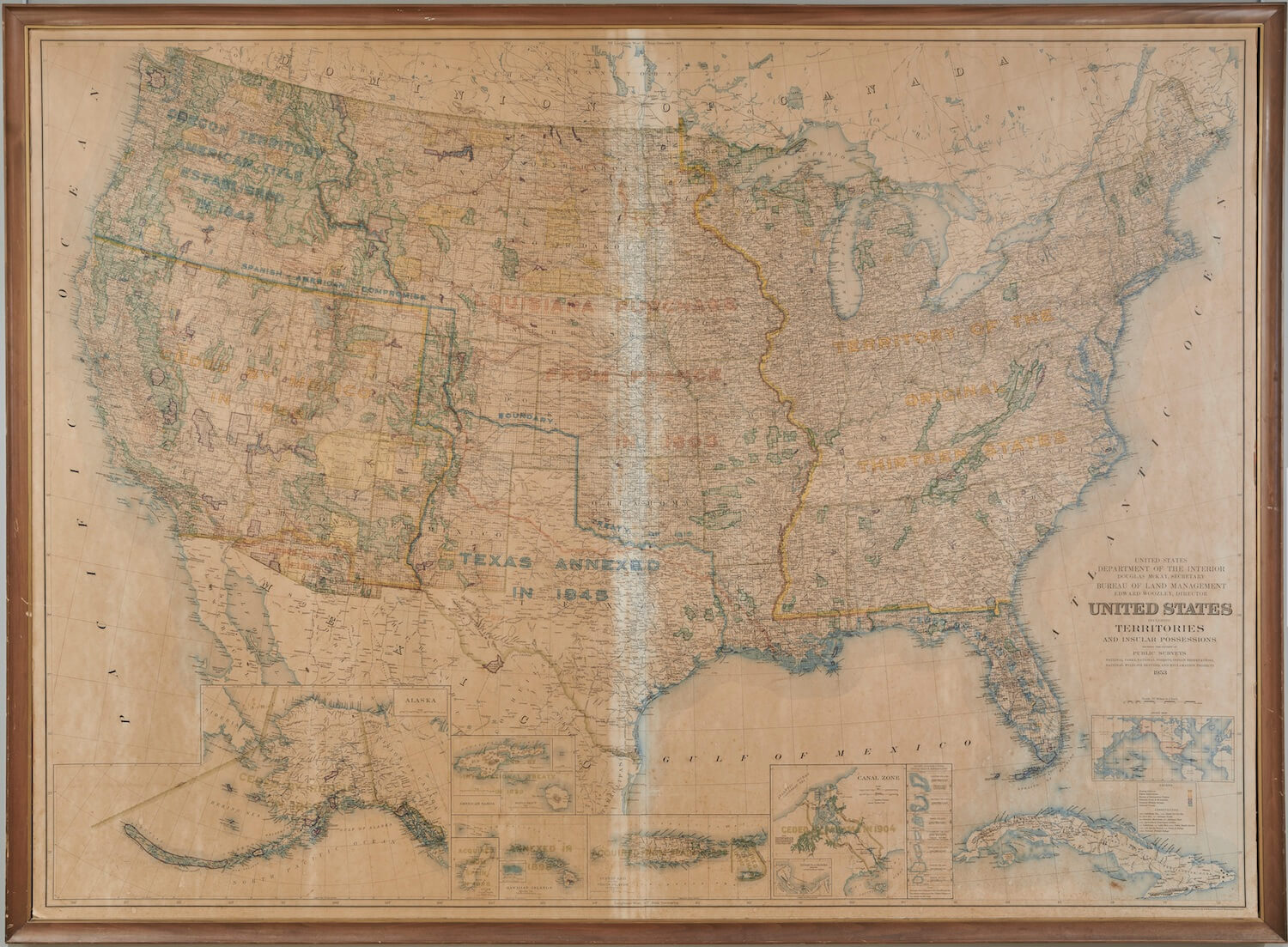

This exhibition features fifty individual maps of the fifty states that comprise the United States of America. While we are used to encountering individual maps of the towns, cities, counties, and states where we reside, as well as the United States as a whole, it is less common, in our modern daily lives, to encounter individual maps of states beyond our region. By pulling together fifty state maps from a variety of individual collections within the Osher Map Library and Smith Center for Cartographic Education, we can begin to explore the following questions: Why were state maps made? Who was making state maps? In what ways did information included on state maps change over time, especially with numerous advances in transportation technology?
The maps, atlases, postcards, and trade cards on display throughout the gallery represent a variety of cartographic forms and ephemera—from manuscript maps made by nineteenth century school children learning geography to trade cards produced to help sell coffee; from postcards aimed at tourists to maps included in Works Progress Administration (WPA) state guides produced by the Federal Writers Project during the Great Depression. There are maps indicating natural resources, new highways, and important historical events, as well as maps found in travel atlases, textbooks, and regional guides. There are nostalgic maps that obscure individual states more complicated histories, and pictorial maps designed to entice tourists. As you walk around the gallery, take some time to study each individual state map. What do these maps tell you about a state’s geographic, economic, and demographic identity? Who was the intended audience for each map? What residents are included as part of the narrative? Who is left out?
This exhibition was curated by our Education Outreach Coordinator, and it is intentionally designed to serve multiple populations. Over 3,000 kindergarten through twelfth-grade students a year interact with the collections of the Osher Map Library, some on field trips and some via classroom visits. As you walk through the gallery, you will notice that each map has a label with information about the state it depicts. These labels were purposefully crafted to appeal to our K-12 student visitors and to facilitate their interactions with the exhibit. On these labels, each state name appears in red. A second set of labels were designed with our university and general public visitors in mind. These labels contain more detailed information about the maps, their creators, and the historical context in which the objects were created. Dr. Harold Osher believes that maps are powerful educational tools that should be more fully accessed and utilized by people of all ages and all disciplinary interests; this exhibition takes that vision to heart, demonstrating the universal appeal of maps and cartographic knowledge. We hope, no matter what brought you to the exhibit, that you leave with a better understanding of the mapping of the individual states, and how their own unique histories fit into the larger context of the history of the United States as a whole.